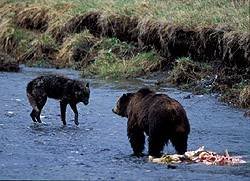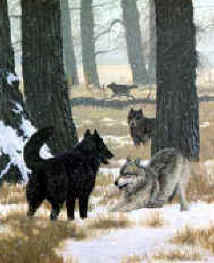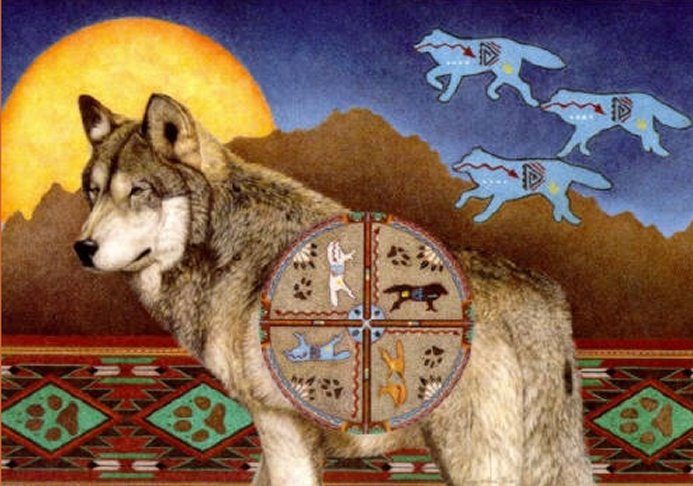Reposted from Dec. 25, 2011:
On Dec. 25, we celebrate Christmas. There are presents beneath a Christmas tree, along with holiday food and drink. Christmas carols are sung while Santa Claus and his reindeer play across the television.
How we celebrate Christmas today involves an amalgam of far flung traditions, only some of which arise purely from Christianity. Much of how we celebrate has to do with pagan traditions redirected to celebrating the birth of Christ.
I find it fascinating that some radical secularists and atheists repeatedly point this out, citing it as proof that the celebration of Christmas is somehow false or hypocritical. That is a non-sequitur. It is that which is celebrated that matters, not the trappings or method of celebration, nor the date on which it occurs.
That said, the trappings and methods are fascinating, and date back, in many cases, to antiquity. Thus do we have everything from Christmas on December 25th to Santa Claus, the yule log, and caroling to name but a few of our modern Christmas traditions.
Syncretism
Scratch most any Christian holiday and you'll find all sorts of pagan customs caught up in it. As Christianity spread into pagan lands, the Catholic Church embraced the policy of syncretism - adopting the forms, trappings and traditions of pagan religions, as part and parcel of converting the pagans to Christianity. Probably the most famous memorialization of a papal order to use the process of syncretism comes from the writings of the Venerable Bede, who notes that in 601 A.D., Pope Gregory sent a letter to his missionaries instructing them to adapt local customs and places of worship as part of the conversion process whenever possible.
Christmas on Dec. 25
The earliest Christians celebrated the death and resurrection of Jesus, they didn't celebrate his birth - probably because the bible doesn't tell us the day on which Christ was born. Modern historians and theologians put the birth of Jesus as occurring somewhere between April and September. Nonetheless, in 337 A.D., Pope Saint Julius I directed that Dec. 25th should be the day on which we celebrate the birth of Christ.
Why he did that, we can only make an educated guess. In 337 A.D., the ancient Roman Empire was the world's superpower. Christianity had only two decades earlier emerged as a legitimate religion in the empire. For the 300 preceding years, Christians had been intermittently and brutally persecuted, with the worst having had occurred under Diocletian starting in 303 A.D. and not fully ending until 313 A.D. with Edict of Milan signed by Constantine I.
By 337 A.D., Christianity was in competition for supremacy in the Roman Empire. Pagan Romans prayed to many Gods, but the most important of these was Saturn. The major celebration of this God was Saturnalia, beginning on the day of the winter solstice and ending about a week later. It was a week of celebrations, gift giving, and of kind treatment of slaves. When the Julian Calendar was first promulgated in 46 B.C., it set the date of the Winter solstice as Dec. 25.
In addition to Rome's Saturnalia, most pagan religions had major celebrations centered around the Winter solstice. So when Pope St. Julius I chose Dec. 25, he placed Christianity's second most important celebration, the birth of Christ, squarely over top the pagan midwinter celebrations and Saturnalia, continuing the traditions of feasts and gaiety, but turning them to a celebration of the birth of Jesus for Christians.
Gift Giving -
The giving of gifts at Christmas time seems to have been a continuation of such acts common throughout the pagan midwinter celebrations, including Saturnalia. Near a millennium later, some leaders of the medieval Church, in a true humbug moment, tried to suppress gift giving because of its pagan roots. What were they thinking? Fortunately, saner heads prevailed and the Church finally came to conclude that gift giving at Christmas was justified on the basis of the gifts rendered to Jesus by the magi at the Epiphany, in addition to the tradition of gift giving for which Saint Nicholas became famous in 4th century Asia Minor.
Santa Claus, Yuletide, and stockings hung by the chimney with care -
Saint Nicholas, the man who forms much of the foundation for our modern Santa Claus, lived in 4th century Asia Minor, where he served the Church as the Bishop of Myra.
Saint Nicholas, a deeply pious man with a great love for children, began the habit of gift giving in the Christian tradition. He often would go about at night and leave gold coins in the shoes of his parishioners. Nicholas is credited with several miracles, but perhaps his most famous exploit involved simple charity to help a poor family:
. . . a poor man had three daughters but could not afford a proper dowry for them. This meant that they would remain unmarried and probably, in absence of any other possible employment would have to become prostitutes. Hearing of the poor man's plight, Nicholas decided to help him but being too modest to help the man in public (or to save the man the humiliation of accepting charity), he went to his house under the cover of night and threw three purses (one for each daughter) filled with gold coins through the window opening into the man's house.
You can find a detailed description of his life and the many legends surrounding this most famous of Saints here and here.
But St. Nicholaus is not the whole foundation for Santa Claus. How we get from Saint Nicholas to Santa Claus is the story of a syncretic melding that occurred in antiquity of Saint Nicholas with the Norse God Odin. Odin, a God of War, was also a gift giver to children. During the pagan midwinter celebration of Yule, Odin would ride his flying horse onto the roof of each house. Children would place carrots and straws in their shoes and set them near the chimney. Odin's horse would consume the goodies while Odin rewarded the children with Gifts.
So thorough was the conversion of the Germanic peoples that even the name of their ancient celebration, Yule, was re-defined to refer to Christmas. And as the Norse converted, they melded St. Nicholas with Odin, creating a figure known as Sinter Claes who made his home in the frozen northern lands. When Sinter Claes came to America with the first Dutch settlers, his name was anglicized to Santa Claus. It was in America that Santa was given reindeer instead of a horse, and it was in the famous Clement Moore poem, T'was the Night Before Christmas," that our modern Santa Claus was given description.
Odin was usually shown in green robes, representing "the Celto-Germanic idea of evergreens surviving through the winter and representing the renewal of life." Likewise, Santa Claus was, for many centuries, shown as dressed in green robes.
My research isn't turning up a definitive answer on how the color red came to be associated with Santa and Christmas in general. One theory is that the association of red with Christmas comes from the color of St. Nichalous's vestments. A second, more cynical theory is that Coca Cola corporation pushed red - the same red as the color of their cans - in their early marketing campaigns centered around Santa Claus.
Christmas Carols and Caroling -
A "carol" is a song devoted to Christmas. The first hymns to Christmas date all the way back to 4th century Rome, not long after Pope St. Julius I set the date for the birth of Jesus. Indeed, one of those early carols, "Of The Father's Love Begotten," written at the turn of the 4th century, is still sung by choirs today.
While Christmas Carols have always been with us, the act of "caroling" - visiting homes to sing carols - has roots in the pre-Christian Anglo-Saxon tradition of "wassailing." By the Middle Ages, the wassailing tradition had been absorbed into Christianity, and it became customary on 12th night (see The 12 Days of Christmas) for groups of wassailers to sing songs at their lord's manor. As set out in the ancient carol, still popular today, "Here We Come A Wassailing" the peasants ask for ale and food and in return bestow their blessings and good will upon the lord.
Christmas Trees -
The modern Christmas Tree has its origins in one particular "mystery play" commonly staged during the Middle Ages on Christmas Eve. The play told the masses the story of Adam and Eve using as a prop a "Paradise Tree" - an evergreen tree adorned with apples and wafers. At some point, it became common among West Germans to set up such a tree in their homes, with the dedication becoming associated with Christmas rather than the Creation story. Candles and other decorations were added and this German tradition gradually spread beyond its borders. The tradition was brought to Britain in the early 19th century by Queen Charlotte when she married King George III. And while such trees were common amongst German immigrants to America, it was an 1848 photo of Britain's King and Queen posed next to a Christmas tree that set the tradition alight throughout all of the U.S.
And in conclusion, let me wish a Merry Christmas to one and all.


















































